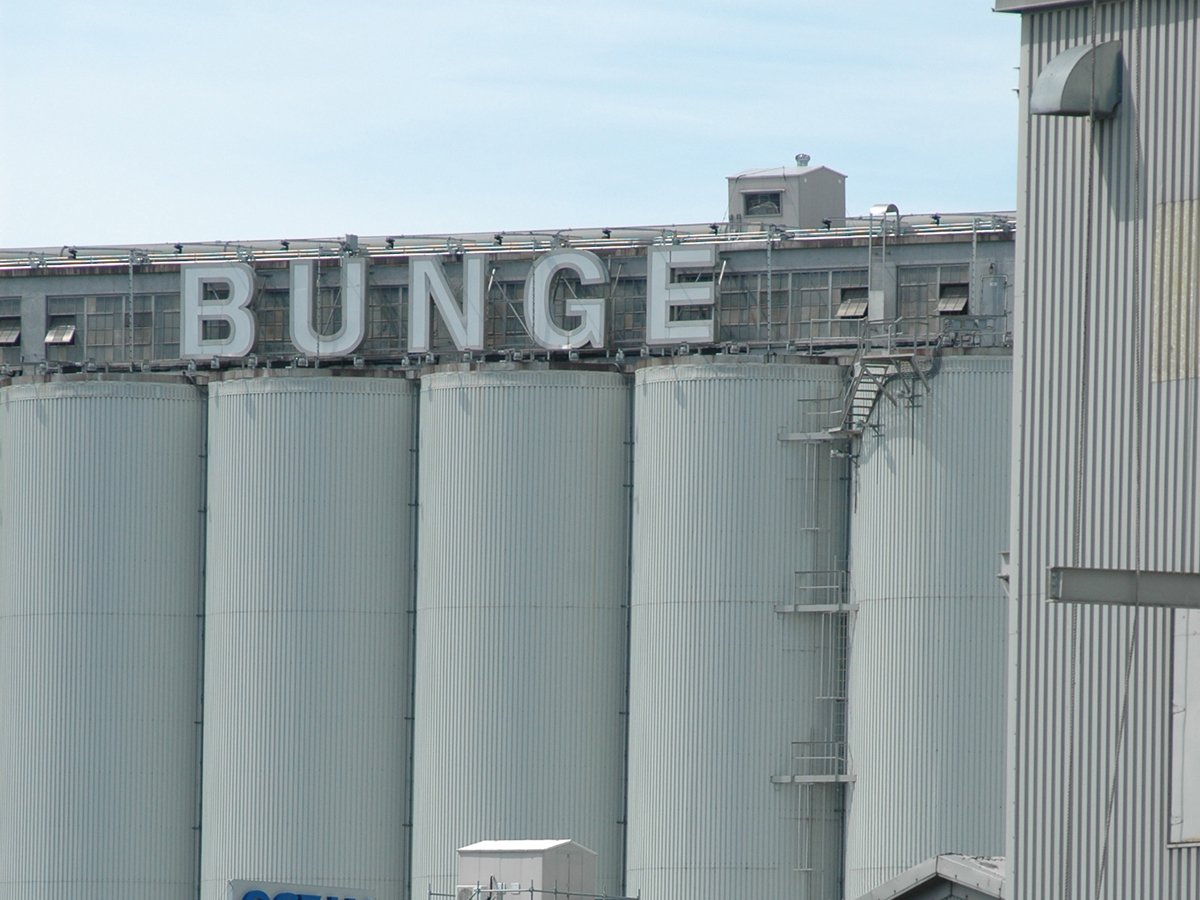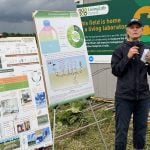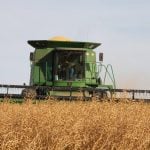A border blockade participant and the mayor of Coutts, Alta., testify at the Public Order Emergency Commission hearing
For more than two weeks in February, Alberta’s biggest agricultural trade lifeline to the United States was either totally hampered or severely delayed after hundreds of protesters locked down the Coutts border crossing.
For the past month, the Public Order Emergency Commission has been hearing testimony from those involved in multiple protests against pandemic-related public health restrictions across the country that ultimately led to invocation of the federal Emergencies Act.
Last week, after hearing multiple witnesses connected to the Ottawa and Windsor demonstrations, testimony turned to the Coutts blockade.
Read Also

Bunge’s crop mix is changing
Bunge has predominantly been a soybean processing firm, but that’s about to change after the merger with Viterra with softseed processing and grain merchandising gaining ground.
That action was part of a widespread protest across the country triggered by opposition to cross-border vaccination requirements for truckers.
“I want to speak to what Coutts was. It was a gathering of truckers, mainly farmers,” testified Marco Van Huigenbos, one of the leaders of the Coutts blockade.
“And, for me, what’s important is that we were there to demand that our representatives communicate with us like they are obligated to do and like what had not been happening.”
Van Huigenbos, a current Fort Macleod town councillor, is facing criminal charges of mischief over $5,000 along with two other leaders of the Coutts blockade.
However, Van Huigenbos testified he initially wasn’t part of organizing the slow roll protest that made its way from Lethbridge to Coutts on Jan. 29. At first he was only a participant, he said.
“It was never my intention to block the border. It was always our intention to create an inconvenience at the border,” he testified.
Intentional or not, by the early evening of Jan. 29, a blockade was fully established, cutting off access to the crossing and trapping a number of transport vehicles in a no man’s land between the exit of the border and the beginning of the blockade.
Van Huigenbos became involved in the organizational structure of the protest as negotiations began between RCMP and protesters over how to deal with various access issues to and from Coutts.
“I think that that comes back to more who I am, my character, my position as a town councillor, my ability to articulate well,” he testified.
“All of that put me in a position where I was most, I would say, skilled. I’ve never been trained for this, but in this case, most skilled to deal with the RCMP and any other conflict.”
Despite Van Huigenbos’s testimony that he was not aware of plans to blockade the border before the slow roll action of Jan. 29, evidence was presented at the inquiry of social media activity indicating that was in fact the goal of some.
Jim Willett, mayor of Coutts, emailed Alberta’s then justice minister, Sonya Savage, about the internet chatter on Jan. 27.
The next day, a staff member from the ministry contacted Willett to tell him, “RCMP’s on top of it and we got it under control.”
Willett said it became clear Jan. 29 that that was not the case.
“When the trucks drove into the median and across both lanes of traffic going both directions, it became obvious that nobody was in control,” Willett testified.
He told the commission about the near daily communications he was having with then Alberta transport minister Rajan Sawhney and her efforts to negotiate a breakup of the blockade.
“She was working both sides; trying to talk to the people that organized the protest and also with the provincial administration to get some kind of action happening. She’s responsible for — or was responsible at this time — for seeing that that traffic flow works,” Willett testified.
“That’s our lifeline in Alberta. And so she’s pulling out all stops, talking to anybody she can. I know she talked to truckers, she talked to Marco (Van Huigenbos).”
However, he also testified that her attempts to communicate face-to-face with protesters were stymied by her own government.
“She got as far as Lethbridge and didn’t get permission to come farther south,” Willett testified.
Van Huigenbos said the protesters were seeking engagement with the provincial government on public health restrictions.
“In my view, Alberta took a fairly heavy-handed approach, you know, for freedom-loving Albertans and the worst part was the inconsistencies and the lies,” he testified.
“Kenney was on the record saying, ‘we will never have a vaccine passport.’ One month later, we have the (Restrictions Exemption Program) which is essentially the same thing.”
Van Huigenbos told the commission that Canadian Cattle Association representatives applied pressure on Feb. 4 to move the protest to Edmonton.
“That was the objective of those representatives in the cattlemen’s association because we were an inconvenience to them and they had worked away and influenced individuals who had reputation and who were attending this protest who had then called a meeting,” he testified.
Van Huigenbos said he wasn’t part of that meeting and stressed that a majority of protesters opposed moving the protest, although not before information was leaked that the demonstration would be heading to the capital.
He testified to being “very frustrated because this had happened once before where we were almost sabotaged, in my view, of you know, leaving Coutts by individuals who had no bearing in Coutts.”
Van Huigenbos said there was no response from the federal government for nearly a week following provincial municipal affairs minister Ric McIver’s official request to Ottawa Feb. 5 asking for assistance.
“So it goes to show you that for six, seven days, there was no communication between the federal and the provincial governments, so … Coutts was of little concern to the federal government as a whole,” he testified.
Evidence and testimony provided by the Alberta government indicated there were multiple ongoing communications focused on the province’s request to access Canadian Armed Forces resources for enforcement action to physically remove the protesters’ vehicles.
According to written submissions filed by the Alberta government, in a Feb. 9 phone conversation between Premier Jason Kenney, Savage and federal public safety minister Marco Medicino, there was resistance to the idea of military involvement.
Savage’s recollection was “that the federal government was reluctant to use the (Canadian Armed Forces) in any manner in response to civilian protests and viewed even using CAF equipment for towing as crossing that line.”
Van Huigenbos told the commission the protest ended shortly after RCMP executed search warrants on Feb. 14, which resulted in recovery of firearms and the arrest of a number of individuals.
Testimony on the Coutts protest from RCMP and federal government officials will continue before the commission wraps up on Nov. 25.
Anatomy of a blockade response
Jan. 26: Alberta government becomes aware of calls for a convoy destined for Coutts.
Jan. 29: Roughly 1,000 vehicles form a 48 kilometre convoy heading from Lethbridge to Coutts. It was originally advertised as a slow roll up and down the highway leading to the province’s only 24-hour border crossing with livestock and food inspection capabilities. By the end of the day, protesters begin blocking the border.
Feb. 1: An RCMP enforcement effort to remove the blockade fails as protesters blow through RCMP roadblocks at Milk River to join the Coutts protesters. The police force reports to the province that tow truck companies were refusing to assist in enforcement actions and inquiries were being made to access heavy military equipment from CFB Edmonton.
Feb. 2: Alberta Premier Jason Kenney reiterates request for military equipment in phone call to federal public safety minister Marco Medicino. Medicino asks for request to be made in writing.
Feb. 3: RCMP asks then-Alberta justice minister Sonya Savage to grant it extraordinary powers under the police service agreement to draw resources from elsewhere in Alberta and beyond provincial boundaries, which is granted within hours.
Feb. 5: Alberta municipal affairs minister Ric McIver sends written request for federal aid “in removing obstacles from highway.” Letter does not mention calling in Canadian Armed Forces resources.
Feb. 7: Federal emergency measures minister Bill Blair informs McIver and Savage in short phone call that Canadian Armed Forces equipment only suitable for
military purposes.
Feb. 8: Premier Jason Kenney announces plans to gradually ease pandemic public health restrictions. Following the announcement, protesters resume a complete blockade of the Coutts border crossing, which had been easing in the previous days.
Feb. 9: In a conversation between Kenney, Savage and Medicino, the premier states his staff with military experience inform him equipment at CFB Edmonton would be suitable for use at Coutts border. Medicino resists the idea of using military resources in response to a civilian protest.
Feb. 10-11: Kenney continues to advocate for use of military resources with federal intergovernmental affairs minister Domenic LeBlanc.
Feb. 12: The Alberta government begins purchase of 12 vehicles at a cost of $826,000 that could be used to remove vehicles in Coutts.
Feb. 14: RCMP execute a search warrant at a Coutts home and seize numerous firearms, ammunition and body armour as well as arresting 13 individuals. Prime minister Justin Trudeau informs Kenney in an early morning phone call the federal government was considering invoking the Emergency Act later that day.
Feb. 15: Coutts protesters leave the village and Milk River sites.
Feb. 21: Testy texts are sent between McIver and Blair, starting with the provincial minister indicating Alberta has still not received response to his Feb. 5 letter.
March 23: McIver complains Alberta has still not received a response to his letter of Feb. 5 and formally withdraws request in an email to Blair.
Contact alex.mccuaig@producer.com
















